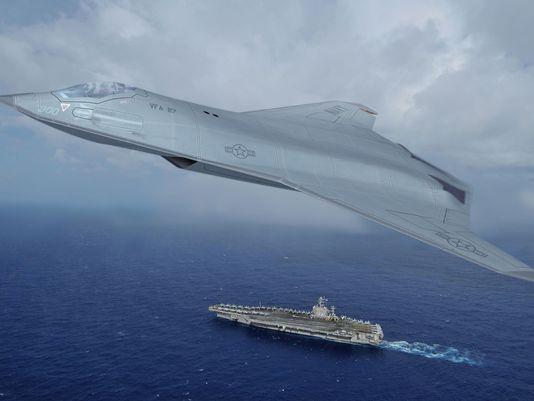The sixth generation fighter that will fly in the 2035, according to Northrop Grumman, could be unmanned, equipped with advanced laser weapons and computer resilience. Although the F-35 has not yet entered service (the operational history of the tactical fighter has yet to be written), the Pentagon has already started conceptual work on the new sixth-generation platform that will replace the F-22 of the Air Force and the Navy F / A 18. Suffice it to say that the Raptor, in the 2035 will have more than thirty years of service: hence the need to start immediately the development of the new weapon system.
We know that the US defense industries have been working on the new sixth generation fighter for some time. In addition to supercruising speed and the now obvious capacity of armament brought internally, the new fighter could also have a certain self-healing capacity. This feature would allow the aircraft to remain in operational theaters, even after suffering severe damage.
The idea of a self-healing system is not new. In the 2008, the aerospace engineers of the University of Bristol, they developed this technology by taking inspiration from plants and animals. The coating, placed in some vulnerable parts of the aircraft, is composed of two resins: an epoxy and a hardener. The concept is simple: by striking the area covered by the material, the latter emerges from the entrance hole of the bullet or the splinter of the exploded head. The two resins, combining with each other, seal the affected part, allowing the aircraft to continue the mission despite the damage suffered.
Northrop, an F-35 subcontractor, will make an offer like prime contractor for the new sixth generation fighter. The company is involved in numerous studies to determine the performance parameters of the future system with cutting-edge technology and design. One of the main problems facing the Pentagon is the protection of aeronautical data and communication lines in an environment where the cyber hacking now represents normality. Not even the US can fight any cyber attack, but they will have to be able to detect the intrusion and prevent damage. Northrop Grumman's new defense system was inspired by the human body.
They explain from Northrop. "When the human body is attacked by a virus, it reacts thanks to the white blood cells that attack and try to manage the infection so as to prevent damage to the body. Our systems, in 2030, will have something very similar."
The concept of "digital white blood cell" is based on the ability to inoculate a harmful trace in an inert network before it spreads throughout the entire system. Another key factor for the industry is to find the perfect balance between speed and autonomy. Northrop Grumman is focusing on the autonomy of the aircraft and not on its speed, given the obvious capacity of the super-cruise. The designers are also trying to solve the heat management generated by direct energy weapons. Thermal management is particularly difficult when implementing a high power system such as a laser.
Finally, the role of man on board. The Pentagon has not given any directive on this. Translated means that sixth generation fighters could be completely unmanned, although the MUT program continues to be successful among the military. The "Manned-Unmanned Teaming" program grants a pilot who is on a flying platform (helicopter or fighter) the ability to control a formation of drones. The new US doctrine foresees "a constant evolution of automation in the field, with human pilots destined to become commanders in the field. ”If the MUT was imposed by the Pentagon as the main specification for sixth-generation fighters, the 2030 pilots would become field commanders in the rear.
Finally, Northrop Grumman is pushing ahead with new software that can replace the human brain in battle. The concept is based on the capacity for self-awareness based on the experience of thousands of aerial confrontations. According to Northrop, the first self-conscious fighter could be ready for 2040 and implemented in the sixth generation platform that will have already completed part of its development.
(photo: Northrop Grumman)












